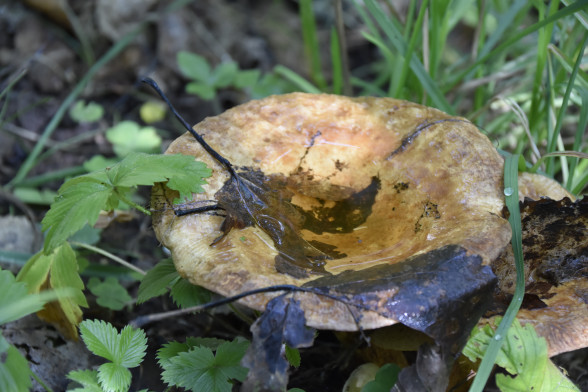
Brown Roll-Rim
Brown roll-rim is a very common large mushroom of the genus Paxillus in Latvia. In the 20th century, prolonged debates about its edibility resulted in the consensus that brown roll-rim is a toxic mushroom. Despite its classification as toxic, poisoning does not typically occur after the first consumption, leading to its frequent use in cuisine. The harmful effects of the mushroom on the body include accumulation.
The cap is broadly convex, later becoming flattened and eventually depressed, with an irregular margin. It has a fleshy texture and ranges in color from brown to olive-brown, sometimes with yellowish or reddish hues. In wet conditions, it may become slightly sticky, while in dry weather, it tends to be somewhat fibrillose. Occasionally, it has a shiny appearance, with a strongly inrolled, hairy margin. The cap typically measures 5-15 cm in diameter. The common growth period in Latvia is from June to October, and it often grows in large, dense clusters.
Brown roll-rim resembles the ugly milk-cap mushroom from above but can be distinguished by its brown color (though darker), yellowish gills from an early age, browning (including the stem), and the absence of latex.
There is no antidote for poisoning with brown roll-rim mushrooms. Treatment is possible only in a hospital setting, where it is possible to continuously monitor the patient's blood tests, and it is symptomatic.

